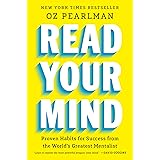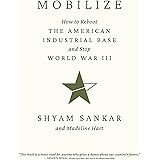Pricing a stock without context is like buying a house without checking the neighborhood. Stock valuation ratios help you judge whether you’re paying a fair price for the business you’re buying. Three simple but powerful tools are the Price to Earnings ratio (P/E ratio), the PEG ratio, and the PEGY ratio. Used correctly, they help you compare companies, balance growth against price, and factor in dividends.
Let’s have a basic understanding of these ratios in detail.
- P/E Ratio: How many dollars investors pay for each dollar of current earnings.
- PEG Ratio in stocks: P/E adjusted for expected earnings growth.
- PEGY Ratio explained: PEG further adjusted for dividend yield.
P/E Ratio (Price to Earnings)
The P/E ratio tells you how expensive a stock is relative to its earnings. High P/E often implies higher growth expectations; low P/E can suggest value or trouble.
\[\mathrm{P/E}=\frac{P}{\mathrm{EPS}}\]Trailing P/E: uses the last 12 months (LTM) EPS.
Forward P/E: uses next year’s expected EPS.
Example
- Price = $50
- Trailing EPS = $2.50
- P/E = 50 / 2.50 = 20
Interpretation: Investors are paying $20 for each $1 of earnings.
When to use?
- Works best: Companies with stable, positive earnings (e.g., mature consumer staples, banks with steady profits).
- Use caution / avoid:
- Negative earnings (P/E is meaningless).
- Highly cyclical industries (boom/bust EPS can distort P/E). Consider normalized earnings or multi-year averages.
- Accounting-heavy sectors where EPS is noisy (large one-offs).
Drawbacks & limitations
- Ignores growth—a 20 P/E can be cheap for a fast grower and expensive for a slow one.
- Sensitive to accounting choices, buybacks, and one-time items.
- Cyclical traps: peak earnings make P/E look low right before a downturn.
PEG Ratio (Price/Earnings-to-Growth)
he PEG ratio adds context by dividing P/E by the company’s earnings growth rate. It asks: Am I paying a fair price for the growth I expect?
\[\mathrm{PEG}=\frac{\mathrm{P/E}}{\mathrm{EPS\ Growth}(\%)}\]Important: Most investors use the growth rate as a whole percentage, not a decimal.
Example: 15% growth → use 15 (not 0.15). Be consistent.
Rule of thumb:
- PEG ≈ 1 → “fair” for its growth
- PEG < 1 → potentially undervalued (growth at a reasonable price)
- PEG > 1 → potentially expensive for its growth
Example
- From above, P/E = 20
- Expected EPS growth = 15%
- PEG = 20 / 15 = 1.33
Interpretation: You’re paying a slight premium relative to growth.
When to use?
- Works best: Growth stocks with reasonably predictable growth (secular growers, recurring-revenue models).
- Use caution / avoid:
- Low/zero/negative growth → PEG becomes large or meaningless.
- Very volatile growth (turnarounds, commodity plays).
- Young/unprofitable companies (no P/E, so no PEG).
Drawbacks & limitations
- Forecast risk: depends on future growth estimates that can be wrong.
- Assumes linear growth—real growth is lumpy.
- Penalizes mature compounders: solid but modest growers can look “expensive” on PEG despite excellent quality and cash returns.
PEGY Ratio (Price/Earnings to Growth and Yield)
The PEGY ratio adjusts PEG by adding dividend yield to the growth rate—useful when dividends are a meaningful part of total return.
\[\mathrm{PEGY}=\frac{\mathrm{P/E}}{\mathrm{EPS\ Growth}(\%)+\mathrm{Dividend\ Yield}(\%)}\]Example
- P/E = 20
- Growth = 15%
- Dividend yield = 3%
- PEGY = 20 / (15 + 3) = 20 / 18 = 1.11
Interpretation: Accounting for dividends, the valuation looks more reasonable than the PEG alone (1.33).
When to use?
- Works best: Dividend-paying growth stocks, mature firms with steady payouts.
- Use caution / avoid:
- Unsustainable dividends (payout cuts will break the logic).
- Highly leveraged companies funding dividends with debt.
- No-dividend companies (PEG may be enough).
Drawbacks & limitations
- Ignores payout sustainability—a high yield can be a red flag.
- Still relies on growth forecasts.
- Treats dividends and growth as equivalent contributors, which may not reflect reinvestment needs or tax differences.
| Metric | Best for | Avoid/Use Caution | Strength | Main Weakness |
| P/E | Profitable, stable earners | Negative/volatile EPS; deep cyclicals | Simple, universal starting point | Ignores growth and capital returns |
| PEG | Predictable growth companies | Zero/negative/erratic growth | Prices growth explicitly | Forecast-heavy; assumes linear growth |
| PEGY | Dividend-paying growers | Unsustainable/high-risk yields | Prices growth explicitly | Yield may mislead; still forecast-heavy |
How does famous investors use these ratios
Warren Buffett
- Prefers earnings yield (E/P) and discounted cash flows, often comparing earnings yield to bond yields as a sanity check.
- Focuses on business quality, moats, and owner earnings (cash generation), not just low P/E.
- Takeaway: Treat P/E, PEG, PEGY as signals, but anchor decisions in cash flows, quality, and opportunity cost (what bonds yield).
Peter Lynch
- Popularized the PEG ratio to find “growth at a reasonable price.”
- Rule of thumb: PEG around 1 is reasonable, lower can be attractive—if the business is sound and growth believable.
- Takeaway: PEG is powerful for stock picking—but only with realistic growth assumptions.
Benjamin Graham
- Early emphasis on low P/E and margin of safety.
- Used conservative assumptions and quality filters to avoid value traps (e.g., adequate financial strength).
- Takeaway: Ratios help identify cheapness, but insist on safety and quality to protect downside.
How investors use P/E, PEG, PEGY together
- Start with P/E to spot outliers vs. sector/market history.
- Layer in PEG to check if the price matches growth expectations.
- Use PEGY when dividends are meaningful to total return.
- Cross-check with earnings yield, free cash flow, and debt.
- In cyclicals, use multi-year averages (e.g., 5–10 year normalized EPS or CAPE-style thinking).
- Always test quality (margins, returns on capital, moat) and risk (leverage, customer concentration).




